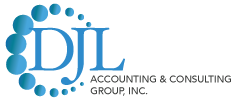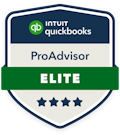A Guide to Home Office Deductions
Working from home has become increasingly common, and with it, the need to understand the tax implications of using your home for business purposes. This guide will help you navigate the requirements and benefits of claiming home office deductions.
Qualifying for Home Office Deductions
To take a business deduction for home office expenses, your home must be used under one of the following scenarios:
- Principal Place of Business: You have an area in your home that is regularly and exclusively used as your principal place of business.
- Meeting Place: You have an area in your home where you regularly and exclusively meet with patients, clients, or customers.
- Separate Structure: You have a separate structure, not attached to your home, which is used in connection with your trade or business.
- Storage Area: You have an area in your home used regularly for the storage of inventory or product samples.
- Daycare Facility: Your home is used as a daycare facility.
Deductible Expenses
Expenses related to your home can be classified into three categories: deductible regardless of business use, deductible only if the home is used for business, and non-deductible expenses.
Deductible Regardless of Business Use
These expenses can be deducted as itemized deductions, subject to limitation:
Real estate taxes
Mortgage interest
Home equity interest
Casualty losses
Deductible Only if Used for Business
These expenses are deductible as business expenses, pro-rated for the amount of business use of the home:
Homeowner’s insurance
Rent
Repairs and maintenance
Security system
Utilities and services
Depreciation (after applying deduction limitation to above expenses)
Types of Home Office Expenses
Expenses related to your home office can be direct, indirect, or unrelated.
-
Direct expenses benefit only the area exclusively used for business, such as painting or repairs in the home office. These are fully deductible.
-
Indirect expenses benefit the entire home, such as insurance, utilities, and general repairs. These are deductible based on the percentage of the home used for business.
-
Unrelated expenses are expenses for parts of the home not used for business, like painting a room not used for business, are not deductible.
Telephone Expenses
The basic local telephone service for the first telephone line is non-deductible, even if used for business. Additional charges for long distance or a second line used for business are deductible.
Depreciation
A qualified home office is considered nonresidential real property, depreciable over 39 years. For home office depreciation, the basis in the home is the smaller of:
- The fair market value (FMV) of the home minus the FMV of land on the date the home was first used for business, or
- The home’s cost plus permanent improvements minus casualty losses minus the cost of land on the date the home was first used for business.
Home Improvements
Permanent improvements before using the home for business are added to the home's basis and depreciated as part of the adjusted basis. Improvements made after using the home for business that affect the business area are depreciated separately.
Example of Depreciation
John installed new windows in his home in 2015, and he began using a portion of his home for business in 2018. In 2023, he installed a new HVAC system. The cost of the new windows from 2015 is added to the basis of his home, and the business portion is depreciated over 39 years, starting in 2018. The business portion of the HVAC system cost is depreciated as a separate asset over 39 years, starting in 2023.
Breakdown:
Windows Installation (2015)
Personal Use Period: 2015 to 2017
Business Use Start Date: 2018
Depreciation Start Date: 2018
Depreciation Period: 39 years
HVAC System Installation (2023)
Business Use Start Date: 2023
Depreciation Start Date: 2023
Depreciation Period: 39 years
Calculating the Business Use of Home Deduction
Business Percentage
The business percentage equals the area of the part of the home used for business divided by the area of the whole house. Methods to determine the business percentage include:
Dividing the square footage of the area used for business by the total square footage of the home.
If all rooms are about the same size, dividing the number of rooms used for business by the total number of rooms in the home.
Part-Year Use
Do not include home expenses in the business use equation for any period during the year when the home was not used for business.
Special Considerations for Daycare Facilities
For daycare facilities, the business percentage of an area exclusively used for business is calculated using the business percentage method. For areas regularly used but not exclusively for the daycare business, multiply that portion by the business percentage of time. Keep a log reflecting time spent conducting the daycare business, including dates, hours each person was in care, and additional time spent organizing, preparing meals, and cleaning up.
Deduction Limitation and Carryover
The business use of home deduction is limited to net income from the business. Deductions not allowed due to the net income limitation are carried over to the following year. They are added to current expenses from each category and subject to the deduction limit for that year for that category.
Simplified Option for Home Office Deduction
The simplified option allows a standard deduction of $5 per square foot of home used for business, limited to a maximum of 300 square feet. Allowable home-related itemized deductions, such as mortgage interest and real estate taxes, are claimed in full on Schedule A. For years the simplified method is used, no home depreciation deduction is claimed, and no later recapture of depreciation is required. Note that although recordkeeping is simplified, this option does not change the criteria for who may claim a home office deduction.
By understanding these guidelines and requirements, you can make the most of your home office deductions and ensure compliance with tax laws.
Disclaimer: This blog is for informational purposes only and not intended to be taken as professional advice. Always consult a qualified professional for specific guidance. While we aim to keep information accurate and current with 2024 tax regulations, be sure to review guidelines annually for updates as they frequently change.
Source: https://handouts.thetaxbook.net/
- Debra Rodway's blog
- Log in to post comments



